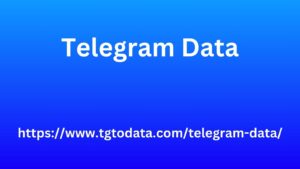1. Introduction
In an era dominated by smartphones and digital connectivity, the humble phone book has undergone a remarkable transformation. Once a bulky directory of names, addresses, and phone numbers printed on paper, it has evolved into a sleek, digital companion that fits in the palm of your hand. This article explores the journey of the mobile phone book, from its origins to its current digital form, and examines the impact of this evolution on our daily lives.
2. From Paper to Digital: A Historical Perspective
Not long ago, households and businesses Ukraine TG Number Data relied on printed phone books to look up contact information. These directories were bulky and often updated annually, making them less than ideal for real-time communication needs. However, they served a crucial purpose in an analog world where landline phones were the primary mode of communication.
The advent of mobile phones revolutionized communication and with it, the concept of the phone book. Early mobile devices stored contacts locally, allowing users to save numbers directly onto their SIM cards or phone memory. This shift marked the beginning of personalized, portable phone directories that were no longer tied to physical locations.

3. The Digital Age: Mobile Phone Books Today
Today, mobile phone books exist predominantly Bulgaria Phone Number List in digital form. Smartphones come equipped with powerful contact management apps that synchronize with online services, such as Google Contacts or iCloud. These apps not only store names and numbers but also integrate additional details like email addresses, birthdays, and even photos.
The transition to digital has brought several advantages. Firstly, users can access their contacts from anywhere with internet connectivity, enabling seamless communication across devices. Secondly, digital phone books are dynamic and update in real-time, reflecting changes instantly. This ensures that contacts remain current and accessible, reducing the frustration of outdated information common with printed directories.
Moreover, digital phone books often incorporate advanced features like caller ID, contact grouping, and automatic backups, enhancing user convenience and security. These functionalities streamline communication processes, allowing individuals and businesses to manage their contacts efficiently.
Conclusion
In conclusion, the mobile phone book has evolved significantly from its origins as a printed directory to a sophisticated digital tool. This evolution mirrors broader technological advancements and changes in communication habits. While traditional printed phone books may evoke nostalgia, their digital counterparts offer unparalleled convenience and functionality in today’s interconnected world.
As we continue to embrace digital innovation, it is likely that the mobile phone book will further evolve, integrating with emerging technologies such as artificial intelligence and augmented reality. Nonetheless, its fundamental purpose—to facilitate communication and connection—remains unchanged. The journey from paper to digital underscores the transformative power of technology in shaping how we interact and stay connected in the modern age.



